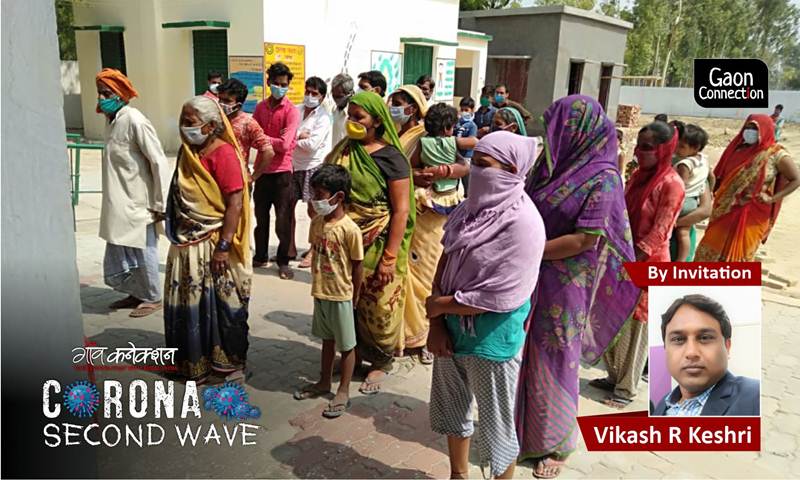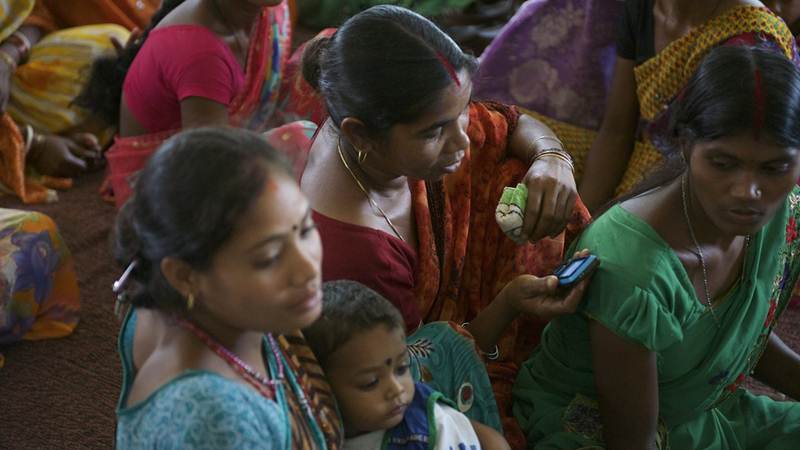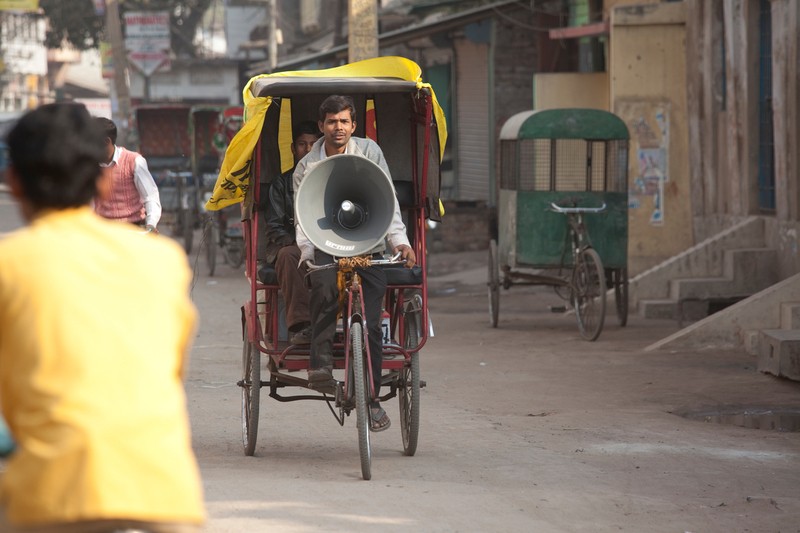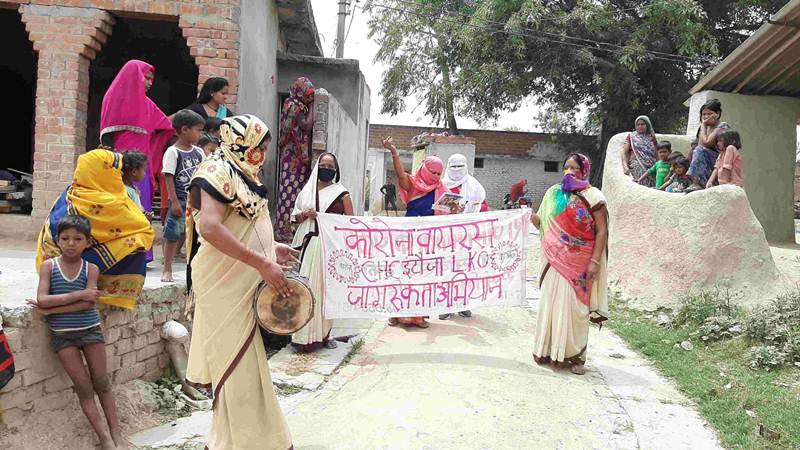Rural healthcare, stigma and lack of risk communication have compounded the impact of COVID second wave in rural India
To prevent catastrophe in rural India, there is an urgent need to prioritise preventive public health measures by decentralised planning. The approach should be to reach out to the community, engage field-level workers after proper training and involve Panchayati Raj leadership to lead the efforts.


With the rapidity by which the second wave of COVID surged, the notion of COVID being an urban phenomenon vanished with the same speed.
“The soul of India lives in its villages” – Mahatma Gandhi
As the census statistic indicates, a huge majority (69 per cent) of India’s population resides in rural villages. And there is a significant inter-state variation in the proportion of the rural population. While the proportion of the rural population in northern states like Uttar Pradesh (UP) and Bihar is 78 per cent and 89 per cent respectively, the states like Maharashtra and Kerala have only around half of their population living in the rural areas.
The first wave of the ongoing COVID19 pandemic last year saw only minimal penetration and spread of the virus in the rural areas, even in predominantly rural states like UP and Bihar. Many possible reasons such as low population density, open environment, relatively slower-moving population, high proportion of young people were proposed to be factors preventing the spread and limiting the severity of infection in the villages.
Also Read: Rising hunger stares rural India in the face as the second wave of COVID invades villages
COVID outbreak was reasoned to be mainly an urban phenomenon. A study published in The Lancet in July 2020 considered urbanisation as an indicator for the vulnerability for COVID transmission, while the rural proportion was considered protective. Even the mass reverse migration of workers from big cities to their rural homes had a somehow limited impact.

Second wave and rural spread
With the rapidity by which the second wave of COVID surged, the notion of COVID being an urban phenomenon vanished with the same speed. An early glimpse of profound rural spread was visible even in urbanised states like Maharashtra and Kerala.
Also Read: For Mumbai’s migrant workers, it’s a second wave of job losses and hunger
So, when the second wave entered northern India, this time it could easily break the barrier between rural-urban. Although segregated official data on rural-urban cases are scarce, there are plenty of indicators to point towards the massive intrusion of the virus in rural households.
As reported, 59 out of 75 districts in UP and 28 out of 38 districts in Bihar have more than 1,000 active cases. As per a news report, around 76 per cent and 65 per cent of the new COVID cases in Bihar and UP are reported from smaller towns. Another news report claims that over half of the cases in the second wave is from the rural area. These estimates can still be an underestimation given the inaccessibility of testing and absence of active surveillance.

Also Read: Post lockdown, this family is staring at hunger and illness. And, they are not alone
Several factors could have contributed to such a rapid spurt in rural cases. Most important being, reverse migration of workers from the urban area, higher transmissibility of the virus, lack of COVID appropriate behavior, and complete withdrawal of the health system from prevention activities.
Ultimately, we have landed in a situation where the rural spread of infection is the bigger concern and needs policy attention based on contextual understanding of multiple dimensions of the problem.
Rural community, healthcare seeking, and COVID impact
The rural societies in northern India function differently from their urban counterparts. They are closely interlinked by various socio-cultural factors and rely on community solidarity during the time of happiness and crisis. However, the invasion of technology and the internet has seriously distorted these conventional equilibria.
Individual health and the healthcare systems come into consideration only when health is compromised or there is a crisis. The health-seeking pattern is influenced by factors, such as availability, accessibility, acceptability, affordability, and often perceived quality.
During routine times, the most closely located, easily available, and trusted provider in the rural area is often the non-qualified practitioners, also called ‘Rural Medical Practitioner’ (RMP), or sometimes derogatorily termed as ‘Jhola Chap’. Visiting a rural primary health centre is mainly limited to OPD consultation and availing free or cheap medicine, availing services under national health programmes or medico-legal emergencies. The rural outreach services of public health systems are also restricted to activities and service delivery of targeted national or state health programmes.
The RMP remains the de facto doctor of choice for routine healthcare needs or any minor emergency. The formal private providers in the urban area are also often favoured, but the astronomical cost of treatment often acts as a deterrent.
Also Read: Graves by the Ganga: a surge of COVID deaths and moneyless families burying, not cremating their kin
During the second wave, this health-seeking pattern altered severely when the chaos in health systems in urban India was extensively visible. The trust of the rural population in the organised health system took a serious beating. People struggled to see any value addition in going to the public hospital, they feared financial bankruptcy if going to the private sector. The public health system which generally reached their door for delivering essential health care was also missing in action.

As a result, they resorted to their tried and tested route to access health care from parallel non-formal health providers.
Stigma and lack of effective communication
As COVID started as a largely urban phenomenon, the focus of communication remained also mainly urban-centric. Terms like ‘social distancing’ could never strike at the core of the rural community. The COVID chaos in the urban area, concern for livelihood by the rural migrant workers caused grave worries in the rural area. They started doubting the urbanised health care system and messaging. The word ‘corona’ or ‘COVID’ became a stigma.
With the penetration of the internet and social media, the extent of infodemic is huge and people are falling prey to a plethora of misconceptions. Due to stigma, misconception, and the possibility of social discrimination, people resist testing even if they are symptomatic.
The resistance to testing is also influenced by their ability to see value in knowing the outcome and possibility of a horrible encounter with health systems. The effort by the public health systems to counter the infodemic and context-specific risk communication has been rather limited till now.

Vaccine, a fairly certain protection tool with the potential to wrest the rapid spread of pandemic, is also associated with similar misconceptions, and there is a need to develop locally acceptable targeted risk communication strategy to address them. Besides the challenge of availability and delivery of the vaccine to a gigantic proportion of the rural population, there is a need to allay hesitancy and build confidence in the rural area.
Way forward
To prevent catastrophe in rural India, there is an urgent need to prioritise preventive public health measures by decentralised planning. Scientifically proved public health methods, such as active surveillance, testing, contact tracing, isolation, and quarantining should continue to guide our efforts.
The additional shield of vaccination needs to be intensified with context-specific strategy as the urbanised and one-size-fit-all approach would not be sufficient for achieving universal coverage.
Realigning and reorienting COVID health systems response towards rural areas is a pressing priority. The approach should be to reach out to the community, engage field-level workers (FLW) after proper training and involve village health committees and Panchayati Raj leadership to lead the efforts. Efforts to engage the parallel non-formal rural health providers in meaningful ways for risk communication and referral can also be explored.
Context-specific risk communication and infodemic management strategy targeted at the rural population should urgently be prioritised and implemented. Any such strategy should be community-led, collaboratively developed, locally acceptable, and evidence-based. This will require empowering the community leadership to take positive action.
We need to inform, empathize, and reassure the rural population and ensure that the system is available and accessible to them when required. Recently, the Ministry of Health and Family Welfare, Government of India released a guideline for containment and management of COVID in rural areas. The states need to adopt and implement this to protect the ‘soul of India’.
Author is a medical doctor, public health, and health policy expert. He is currently a Senior Research Fellow at the George Institute for Global Health, India at New Delhi. He tweets @docVRK.
Views are personal and do not necessarily reflect the opinion of institution/affiliation.

